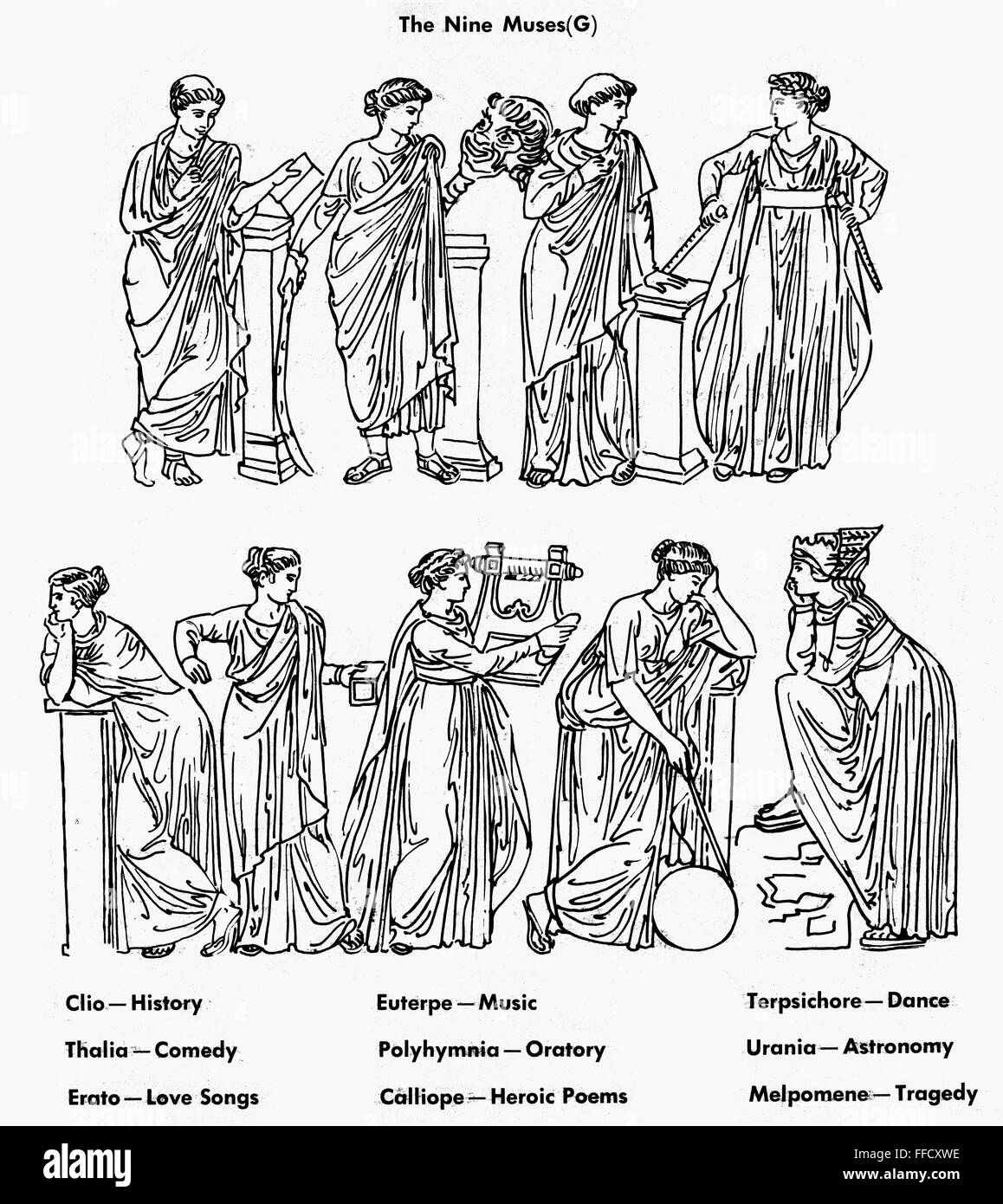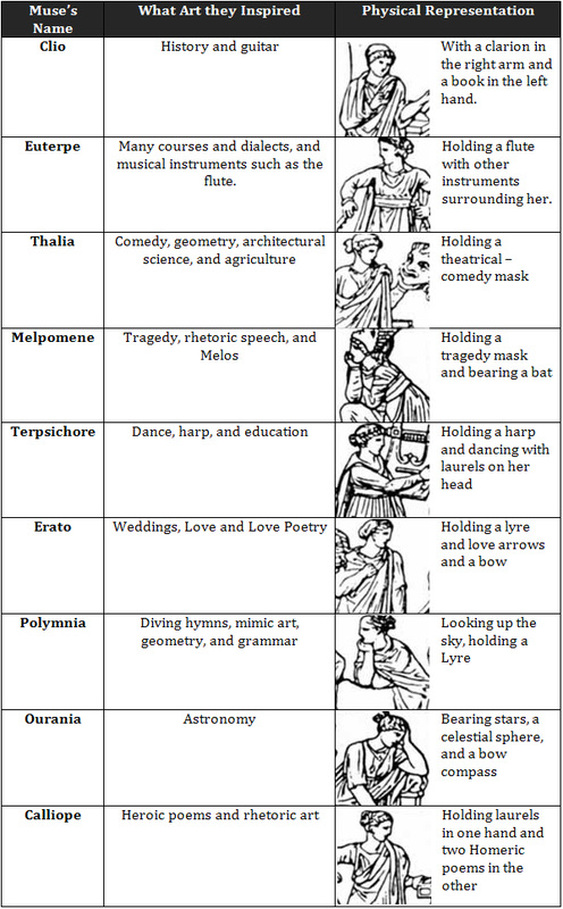Muses symbols have long fascinated scholars, artists, and enthusiasts alike. These powerful emblems represent the divine inspiration that drives creativity and innovation. Understanding their meanings can unlock deeper insights into the world of art, literature, and music. In this article, we will delve into the fascinating realm of muses symbols, exploring their origins, significance, and modern interpretations.
The concept of muses dates back to ancient Greek mythology, where these goddesses were believed to inspire artists, poets, and musicians. Each muse was associated with a specific art form, and their symbols represented the essence of their domains. This rich tradition has influenced countless generations of creators, making muses symbols an integral part of cultural heritage.
As we explore the world of muses symbols, we will uncover the meanings behind each emblem, their historical contexts, and their relevance in today's creative landscape. Whether you're an artist, writer, or simply someone interested in mythology, this article will provide valuable insights into the world of muses and their enduring legacy.
Read also:Hisachi Puchi The Rising Star Of Japanese Pop Culture
Table of Contents
- Introduction to Muses Symbols
- Historical Background of the Muses
- The Nine Muses and Their Symbols
- Symbolism in Art and Literature
- Modern Interpretations of Muses Symbols
- Muses Symbols in Popular Culture
- The Impact of Muses Symbols on Creativity
- Frequently Asked Questions About Muses Symbols
- Sources and References
- Conclusion and Final Thoughts
Introduction to Muses Symbols
Throughout history, muses symbols have been used to represent the divine inspiration that fuels creativity. These emblems are deeply rooted in ancient mythology, where the muses were revered as goddesses of the arts. Each muse was associated with a specific art form, and their symbols reflected the essence of their domains. Understanding these symbols can provide valuable insights into the creative process and its historical significance.
Historical Background of the Muses
The concept of muses dates back to ancient Greece, where they were believed to be daughters of Zeus and Mnemosyne, the goddess of memory. There were originally three muses, but later tradition expanded their number to nine. Each muse was assigned a specific art form, and their symbols became an integral part of artistic expression. Over time, the influence of muses symbols spread beyond Greece, inspiring artists and writers across the globe.
The Nine Muses and Their Symbols
The nine muses are central to the world of muses symbols, each representing a unique art form and its associated emblem. Below, we will explore the symbols of each muse and their significance in detail.
Calliope: The Muse of Epic Poetry
Calliope, the eldest of the muses, is associated with epic poetry. Her symbol is the writing tablet, which represents the written word and storytelling. Calliope's influence can be seen in the works of great poets such as Homer and Virgil, who drew inspiration from her divine presence. In modern times, her symbol continues to inspire writers and storytellers around the world.
Cleo: The Muse of History
Cleo, the muse of history, is represented by the scroll, which symbolizes the recording and preservation of events. Her domain encompasses the documentation of human achievements and the lessons learned from the past. Cleo's influence can be seen in the works of historians and chroniclers, who strive to capture the essence of history through their writings.
Symbolism in Art and Literature
Muses symbols have played a significant role in art and literature throughout history. Artists and writers have used these emblems to convey deeper meanings and evoke emotions in their works. The use of muses symbols in art and literature has evolved over time, adapting to changing cultural and social contexts while maintaining their core significance.
Read also:Hisashi Uchi The Journey Of A Remarkable Talent In The World Of Music
Modern Interpretations of Muses Symbols
In contemporary times, muses symbols continue to inspire artists and creators across various disciplines. Modern interpretations of these emblems often reflect the evolving nature of creativity and innovation. From digital art to experimental literature, muses symbols remain a powerful source of inspiration for those seeking to express themselves artistically.
Muses Symbols in Popular Culture
The influence of muses symbols extends beyond traditional art and literature into popular culture. Movies, music, and fashion frequently incorporate these emblems to convey themes of creativity and inspiration. The widespread use of muses symbols in popular culture highlights their enduring relevance and appeal to audiences worldwide.
The Impact of Muses Symbols on Creativity
Muses symbols have a profound impact on the creative process, serving as a source of inspiration for countless artists and writers. By understanding the meanings behind these emblems, creators can tap into their symbolic power to enhance their work. The study of muses symbols can also foster a deeper appreciation for the cultural and historical contexts that shape artistic expression.
Frequently Asked Questions About Muses Symbols
Here are some common questions about muses symbols and their significance:
- What are muses symbols?
- How do muses symbols influence creativity?
- What are some modern interpretations of muses symbols?
- Where can I learn more about muses symbols?
Sources and References
This article draws on a variety of sources to provide a comprehensive overview of muses symbols and their significance. Key references include:
- "The Oxford Classical Dictionary" by Simon Hornblower and Antony Spawforth
- "Myths of the Muses" by Jane Ellen Harrison
- "The Symbolism of the Muses" by Walter Burkert
Conclusion and Final Thoughts
Muses symbols have played a vital role in the world of art, literature, and music for centuries. By understanding their meanings and significance, we can gain deeper insights into the creative process and its historical roots. As you continue your journey into the world of muses symbols, consider how these emblems can inspire your own creative endeavors. Share your thoughts and experiences in the comments below, and don't forget to explore other articles on our site for more fascinating insights into the world of art and culture.



